The New Shaft Permit Modification – Part 5 – When is a Shaft Not a Shaft but an Expansion?
The New Shaft Permit Modification
Part 5
A WIPP TALE:
When is a Shaft Not a Shaft but an Expansion?
(NO this is not a joke)
Proposed WIPP Shaft Opens the Door
for WIPP Expansion
During the week of May 17th the NM Environment Department (NMED) will hold a public hearing on the Department of Energy’s (DOE) proposed new Shaft at WIPP. DOE expects that this shaft will be finished in 2024, which is when DOE originally told NMED that WIPP would stop receiving waste under the existing state hazardous waste permit.
WIPP 2022 Concept showing the proposed new shaft and drifts. The proposed new shafts and drifts shown at K and N. The New Shaft (K) is labeled Material Hoist/Air Intake Shaft
The shaft is clearly an essential part of DOE’s long range plans, to expand WIPP—currently the only nuclear waste repository in the nation—and to operate it for decades.
While NMED and DOE are trying to limit the May 17th hearing to discussion only about the shaft as a ventilation shaft, New Mexicans are connecting the dots and won’t be fooled by a DOE process that is attempting to push their FOREVER WIPP agenda through piecemeal. This approach lacks appropriate study of the health and safety for communities near WIPP, environmental and economic effects from the modification, or adequate public education or involvement.
WIPP’s New Shaft Application Presents a Multitude Of Concerns for New Mexicans.
With so many concerns to be addressed,
Choose one of our 3 sample comment letters to send to NMED:
Broken Promises and Misrepresentations
Land Use and other Economic Considerations
Copy one letter, mix & match them or put one together yourself from the bulleted concerns below.
Click the email link here to email your comments to NMED.
You may comment orally on May 17th even if you have already emailed your comments.
Find information here on how to comment orally at the public hearing.
Concerns for New Mexicans:
BROKEN PROMISES and MISREPRESENTATIONS
- DOE has misrepresented the purpose of the New Shaft, as only a ventilation shaft, when in reality it is the first part of a planned expansion of WIPP. The General Accountability Office calls it a “utility shaft.” WIPP’s 2022 conceptual draft calls it a “materials hoist” as well as an air intake shaft. A new filter building will provide more air than needed and is supposed to begin operations before the shaft is even completed.
- DOE’s promises to the people of New Mexico include limiting the amount and types of waste disposal, and developing other repositories for the rest of the waste. The WIPP expansion will violate all these promises.
- DOE’s current expansion plans for WIPP, as reflected in their permit renewal application, would eliminate any end date for WIPP. (Hence: STOP FOREVER WIPP!)
- WIPP’s mission was to accept legacy/Cold War transuranic weapons waste, then decontaminate and close the dump, starting in 2024. DOE and the federal government always knew WIPP could not hold all the TRU waste and promised to build other repositories for the additional waste. WIPP was to be a “pilot project” for other repositories, but no other repositories have ever been built.
- No State, including New Mexico, is willing to host the only repository. We are unwilling to become the nation’s de facto nuclear dumping ground.
WHAT’S DRIVING THE WIPP EXPANSION
- One major driver is waste disposal from expanded production of plutonium bomb triggers (or “pits”) at Los Alamos and Savannah River, South Carolina over the next 60 years. These triggers are designed for new nuclear weapons — not to keep the current weapons stockpile reliable.
- Another driver is disposal of 48 metric tons of “surplus” plutonium from Pantex and Savannah River and disposal of transuranic waste from a variety of DOE sites across the country. (Transuranic waste is waste contaminated with radioactive elements greater than [trans-] uranium [-uranic]. Most transuranic waste at WIPP is contaminated with plutonium and most also includes hazardous waste.)
LAND USE and OTHER ECONOMIC CONSIDERATIONS
- Southeastern New Mexico has thriving agricultural and ranching industries (chile, pecans, and dairy to name a few) that could be at risk from any accident or release from the site or along the shipping routes.
- Tourism is another major economic source for New Mexico. Becoming the nation’s nuclear sacrifice area could mean the loss of tens of thousands of jobs in all the related hospitality industries.
- Oil and Gas development — now one of the largest in the world — is also a major source of employment and state tax revenues. There are more than 500 oil and gas wells within 2.5 miles of the WIPP site.
- Expanding WIPP will discourage other cleaner and healthier industries from creating jobs in the area.
- Do we really want to transition southeastern New Mexico from the historical economies of agriculture, resource extraction and tourism to becoming the nation’s nuclear and hazardous garbage dump?
EXPANSION RISKS
- Because of mismanagement, WIPP has already experienced an underground fire and a separate underground explosion that released radiation contaminating air and land offsite. Serious safety and management issues at the repository continue to this day, making another accident more likely.

- Again, because of mismanagement, WIPP is planning on releasing contaminated exhaust air so they can increase the speed of waste operations.
- Underground disposal of “produced water” and fracking from the massive oil and gas industry near WIPP is increasing the number and magnitude of earthquakes in the area. This could impact the integrity of the repository.
- Expanded waste disposal means expanded waste shipments. This waste would be transported through New Mexico and many other states for disposal at WIPP, expanding waste transportation for decades and putting communities all along the routes at risk.
DEFICIENT PUBLIC PROCESS
- DOE started constructing the shaft (with NMED’s approval) before the required public hearing, thereby showing that it did not care about its promises or public comment.
- The WIPP Fact Sheet and Public Notices for the new shaft modification provide only a minimum of information about the new shaft, the WIPP facility, the waste, the contamination underground, and the hydrology & geology near the site.
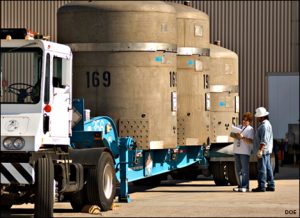
- The long term effects on communities near the site and along transportation routes have not been adequately studied. DOE hasn’t looked at potential exposures from WIPP since the 1990s. With no updated effects studies, impacts on the general public are mostly unknown, and possible disparate impacts on communities of color are completely unknown. Thus, NMED doesn’t have the data to be truly non-discriminatory and protective of human health and the environment.
- NMED promised to translate all “vital” or important documents for Spanish speakers who are not fluent in English so they would have access to the same information that is easily available to English speakers. However, this has not been done.
- Only public notices and the Fact Sheet have been translated. Even the draft permit itself has not been defined as “vital,” nor has it been summarized and translated. The Fact Sheet in no way summarizes the draft permit. This leaves those New Mexicans who aren’t fluent in English unable to inform themselves fully about this permit modification and unable to participate equally and meaningfully in the public process.
—————————————————————————–
References and links are at the end of this email
—————————————————————————–
Madai.Corral@state.nm.us
Please share this newsletter with family, friends and colleagues
Please donate to the Stop FOREVER WIPP Coalition
through our GoFundMe Page.
Looking down into the partially excavated New Shaft (image: DOE)
References & Links
For More InformationStop Forever WIPP
Southwest Research and Information Center (SRIC)
Concerned Citizens for Nuclear Safety (CCNS)
Nuclear Watch New Mexico
Southwest Alliance
|
|
|
Tags: STOP FOREVER WIPP


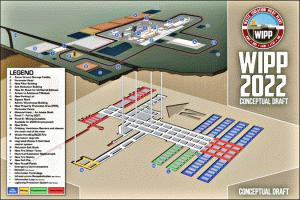

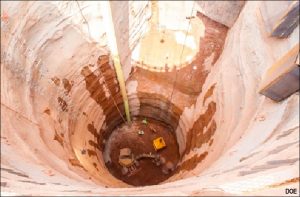

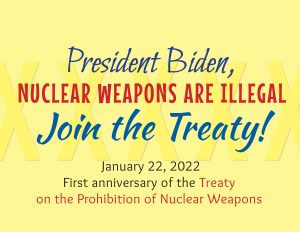
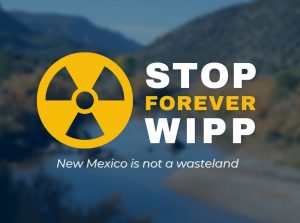






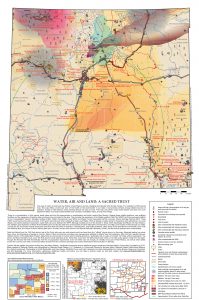

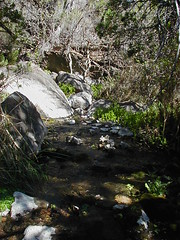

Comments
No comments so far.